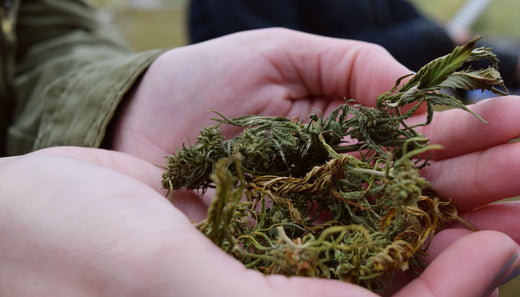
Hemp: A History Lesson
“Is hemp legal?” “Will I get high” …these are some of the most common questions people want to know about our hemp extract products.
Hemp-derived products, which although are not new, have experienced a resurgence in recent years. People are realizing the multitude of benefits this plant has to offer and there is no shortage of (mis)information out there to confuse consumers. To help get to the bottom of these questions, let’s take a quick look at the history of our relationship with hemp and how it has evolved and changed over the years.
According to the Hemp Industry Association, “Hemp is among the oldest industries on the planet, going back more than 10,000 years to the beginnings of pottery. The Columbia History of the World states that the oldest relic of human industry is a bit of hemp fabric dating back to approximately 8,000 BC.” Americans in the Colonial Era and early republic were legally required to grow hemp as it was one of the most useful and versatile crops available- even the original Declaration of Independence was written on hemp paper!”
Hemp was widely grown and utilized in the US until the 1920s and 1930s when the “lumber barons” of the paper and fiber industries began to view hemp as a threat. Newspapers spread false propaganda which was gaining its own reputation thanks a film. Produced in 1936, this film demonized hemp and portrayed hemp users as crazed murderous villains. Responding to the fear incited by these propaganda efforts, the Federal Bureau of Narcotics, which today is known as the DEA, the Tax Act was passed in 1937. This Act banned the production, sale, and use of all hemp- including industrial hemp, despite the fact that hemp does not have any intoxicating effects. Farmers had to stop growing this formerly viable and useful crop and the general public shifted from utilizing it in everyday materials and textiles, to considering it dangerous and unlawful.
In the midst of WWII, the US briefly reversed its stance on hemp and the Department of Agriculture called on farmers to produce more of the crop to help with the war effort. Hemp experienced massive growth and over 400,000 acres were planted from 1942-1945. The growth was squelched again in 1970, with the passage of The Controlled Substances Act which listed hemp as a “scheduled 1 drug” which, once again, restricted the growth, use, and sale of the crop.
Finally, in 2007, hemp was lawfully able to be grown in the US. As people slowly began to rediscover the many benefits of this ancient plant, momentum and support for its cultivation and use has grown. With the passage of the Farm Bill in 2018, restrictions have been fully lifted on the growth and sale of hemp in the United States and consumers are now able to freely access the products they rely on.
As we can see, our history with hemp is a long and complicated one. Even though the regulations and public perception of this ancient plan have fluctuated over time, the true power of the plant has prevailed. Here at Mary’s we are proud to pair the wisdom of this ancient plant with the power of modern technology to provide our customers with effective options to achieve ultimate wellness.
